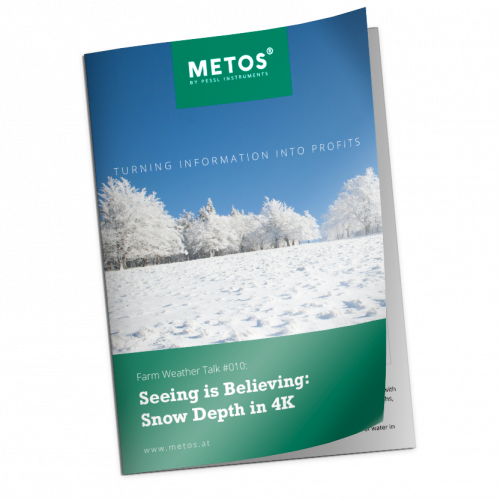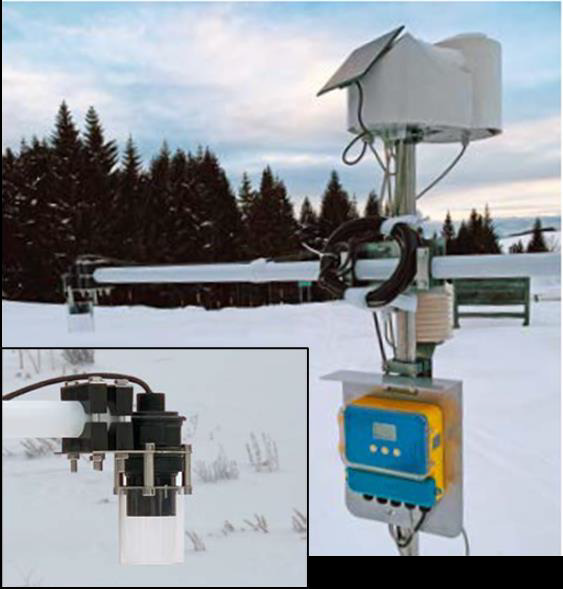A new blog in the Farm Weather Talk series by Guy Ash, METOS® Global Training Manager. This time on the importance of SNOW.
Seing is Believing – Snow Depth in 4K
Snow Benefits: Each inch of snow acts as an insulating blanket, protecting fall-seeded crops from winterkill, which stops frost penetration into the soil and protects the soil from erosion. On the other hand, when there is little snow, frost penetration into the soil is deep, helping to reduce soil compaction. Light, fluffy snow has little snow equivalent water, while heavy, wet snow can add significant moisture to the soil, improving yield potential. The lack of snow can also aid in reducing insect populations, allowing cold temperatures to penetrate deeply. Snow can also trap nitrogen, nitrate, and ammonium from the atmosphere, free of charge, although the amounts are not large.
Snow Risks: Obviously, snow can delay harvest operations and reduce the quality and grade of crops. The lack of snow can lead to deep frost penetration into soils, freezing them and reducing infiltration in early spring, causing winter kill in fall-seeded crops or forages. Early snow in the season may be lost due to sublimation over the winter, resulting in less water infiltrating the soil. Lack of snowmelt in the spring can cause shortages in dugouts and seed bed moisture for germination. Heavy snow and cold temperatures can also increase livestock feeding requirements.
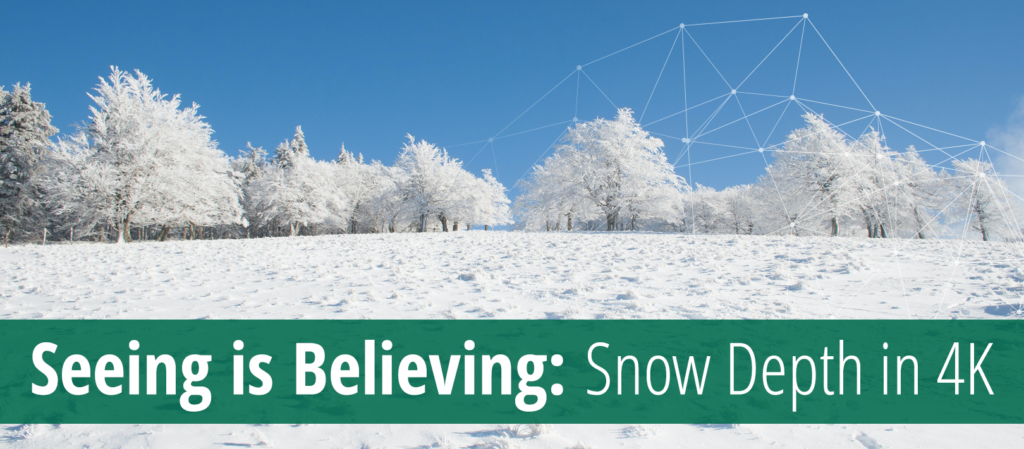
Although the growing season has ended, it’s still important to keep track of the total amount of precipitation received for the year, including snowfall. This provides the “Water Balance” for many agricultural applications. With IoT (Internet of Things) solutions, it’s now possible to measure snow in different ways.
The first way is to use an iMETOS device with an ultrasonic snow sensor and a site-specific forecast. Track snow depth in the field with the ultrasonic snow height sensor and combine it with a rain gauge to capture both liquid and frozen precipitation. You can also monitor air and snow temperatures for freezing and thawing periods (Fig. 2).
In addition, use a site-specific forecast for both liquid and snow amounts, as well as probabilities (updated hourly) for work planning (Fig. 3).
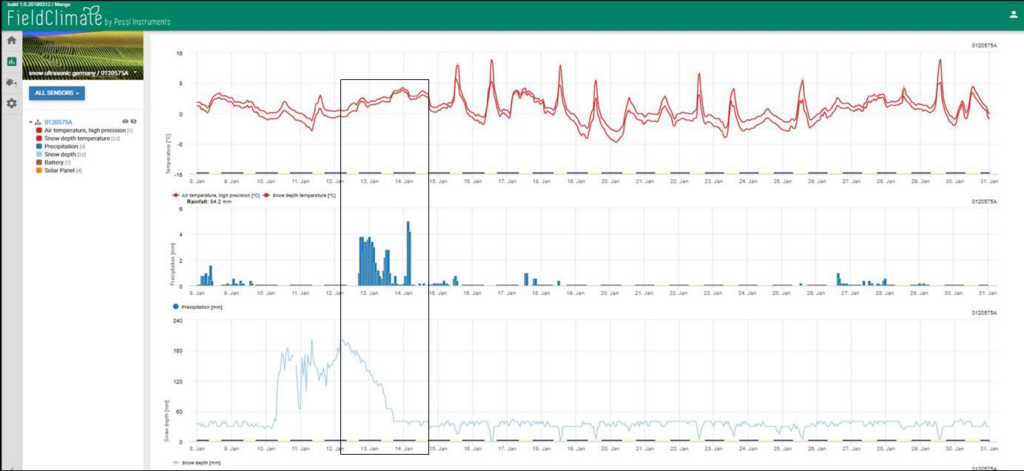
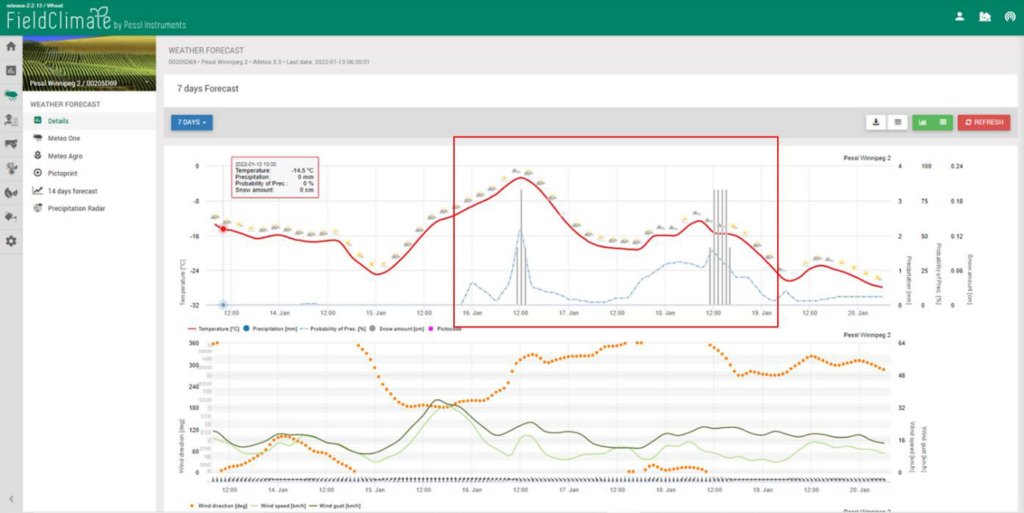
Not all SNOW is created equal, but how do we know what type we have?
As discussed, snow can have both benefits and risks to agricultural production: too little snow, and there is concern for the winterkill of fall-seeded or perennial crops. The lack of snow is also a concern for the recharge in the spring of both dugouts and seedbed moisture.
Overall, soil moisture is the crop’s gas tank, and knowing the total soil moisture allows for the selection of crops and fertility plans.
The timing and amount of water held in the snow can significantly hamper or enhance on-farm production. Late-season heavy snow can cause significant delays in field operations in spring. With a late-season, high-water-content snowfall, field operations can be delayed by 7 to 14 days. The water held in this type of snow does not follow the 10-to- 1 ratio but is more in the range of 3 to 5:1 (3 or 5 cm of snow to 1 cm of liquid water), which can dramatically improve seedbed and subsurface soil moisture if the soils are thawed.
For livestock, heavy snow and cold temperatures drive up food rations and put further pressure on the calving season.
But Seeing is Believing – Snow Depth in 4K!
With an in-field IoT camera device, pictures of the snow can be used to measure snow depth. We have seen the use of CropVIEW® for visualizing crop development and sizing of fruits, but with a little ingenuity, the same device can be used to visualize snowpack and measure depth. This is what has been done in two different areas of the world: Turkey and Canada! In order to save time and, of course, avoid being cold while taking manual measurements, two creative individuals used CropVIEW® to study snowpack and depth throughout the entire winter each day.
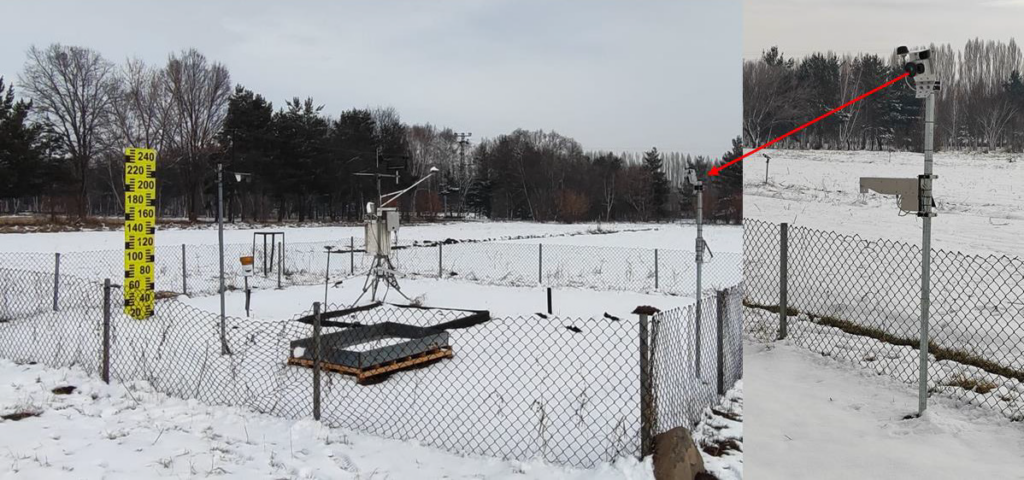
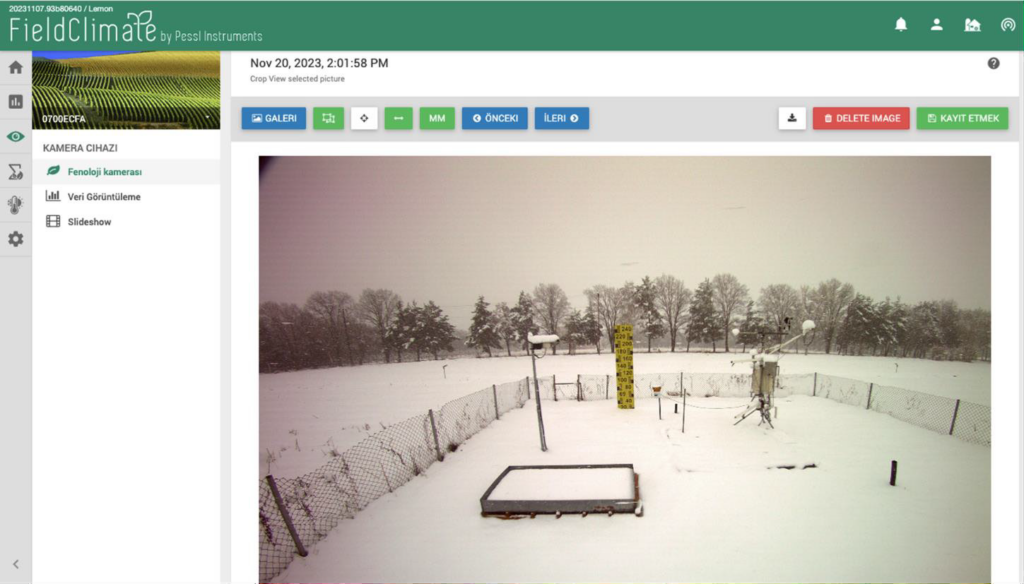
The first images (Figures 4 & 5) depict snowpack images, including coverage and depth, obtained from a meteorological site in Turkey. The second set of images (Figures 6 & 7) originates from a University research farm in Manitoba. In Figure 6, you can observe the rapid melting of the snowpack in spring (within 4 days), along with the ruler used for measuring snow depth. Figure 7 demonstrates how multiple IoT devices can be combined to investigate the entire scenario. In this case, a soil probe is installed in the same field, reaching a depth of 90 cm. It clearly illustrates the moment when the melted snow water infiltrated the first layer and the subsequent increase in soil temperatures at all depths.
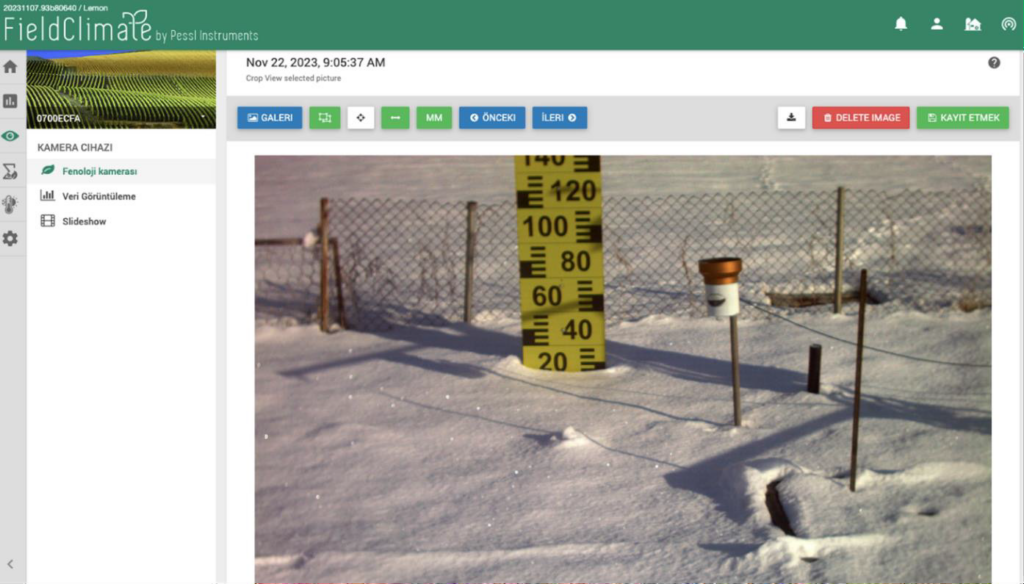

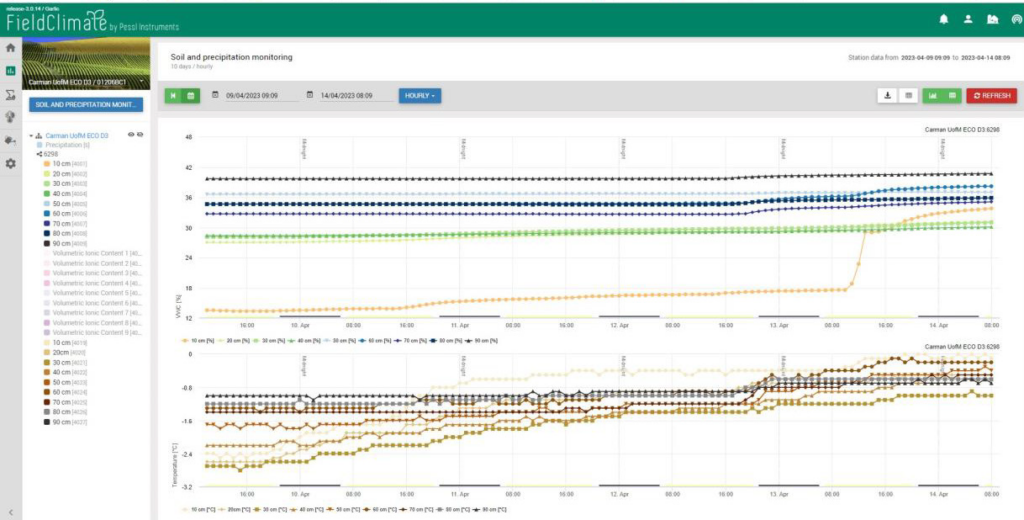
WHAT DO ALL THESE TOOLS MEAN?
Even though the majority of farm operations slow down during the winter, the importance of snow for agronomic and animal welfare remains significant. The lack of snow cover can lead to major winterkill and poor meltwater for spring soil moisture recharge, reducing the potential for income. Heavy snow can adversely impact livestock and calving season, while the snowmelt is welcomed for spring soil moisture and improved yield potential. This can translate into the loss or improvement of thousands of dollars in income on a farm today. Numerous IoT devices can be used to monitor real-time snowpack, depth, and conditions throughout the entire winter season.
Summary and Value Proposition
Like any other science and technology, there are many improved options for obtaining better information and solutions to understand snow dynamics and the impacts it has on agricultural production. Knowing the snow cover and the total water balance on a farm allows for the selection of appropriate crops and planning fertility options or caring for livestock.
- Wide-angle and zoom imagery of snowpack and depth for each day.
- Time series of snow imagery for the entire winter season.
- Site-specific weather observations for air and snow temperatures, rainfall amounts, ultrasonic snow depth, and soil moisture and temperature at various depths.
- Site-specific, field-level forecasts.
Want to learn more?
Download the Seeing is Believeing – Snow depth in 4K brochure.
